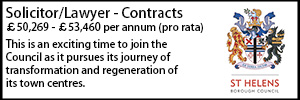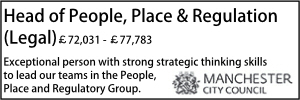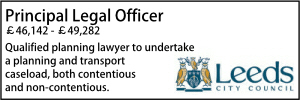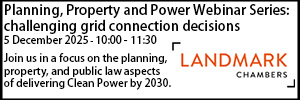Reform or revolution?
- Details
How is Practice Direction 57AC bedding down? Marion Smith QC, Joe-han Ho, Ruth Keating and Philippe Kuhn look at its impact.
As many readers will be aware, on 6 April 2021, a new Practice Direction 57AC came into force in the Business and Property Courts – applying to all trial witness statements signed on or after that date. The reforms have wide impact for those who use the Business and Property Courts and it is important to be aware of the changes which have been brought into place.
Several months ago when practitioners were anticipating the changes there was widespread discussion that the changes would represent a fundamental reform to the way factual witness evidence is collected and presented. It is important for lawyers and clients to alike to reflect on the ways in which witness evidence may need to be collected and statements drafted, in light of the new changes.
However, with the benefit of some recent cases opining on Practice Direction 57AC it is clear that courts want to emphasise that PD 57AC should be seen as repeating and buttressing existing rules rather than introducing radical reform. The key areas to watch in the coming months in the case law are the way in which the courts will consider the recently introduced:
- Statement of Best Practice.
- Witness’s Certificate of Compliance.
- Legal Representative’s Statement of Compliance.
The below article considers some of the guidance which has already been given by the courts.
I. Introduction
Six months in, and we now have guidance as to the approach the Commercial Court and the TCC will take to the new PD 57AC. In this article we will look at the answers to the 5 questions addressed so far:
- What is the purpose of PD 57AC?
- What documents should be listed under PD 57AC paragraph 3.2?
- What do you do if you want to use a third party to take a witness statement under PD 57AC?
- When and how should you raise concerns about the other party’s compliance with PD 31.2 and PD 57AC?
II. Current High Court guidance
The guidance comes from two cases considering applications for redaction of witness statements under PD 57AC paragraph 5.2 and CPR 32.1.
The first in time is the decision in the Commercial Court of Sir Michael Burton in Mad Atelier International BV v Manes [2021] EWHC 1899 (Comm).
The impugned passages in the Claimant’s witness statements all dealt with quantum. The witnesses gave hypothetical evidence, addressing what would or could have happened if joint venture parties had continued to develop an international franchise. In addition to considering PD 57AC, Sir Michael Burton carried out a useful review of the authorities dealing with the circumstances in which a fact witness can give opinion evidence.
The second is the decision in the TCC of O’Farrell J. in Mansion Place Ltd v Fox Industrial Services Ltd [2021] EWHC 2747 (TCC).
In this case the Claimant also applied for a revised certificate of compliance by the Defendant’s legal representatives under PD 57AC paragraph 4.4 (Mansion Place at [19] – [20]).
The central issue was whether an oral agreement was made in a telephone call between the Defendant’s managing director and the Claimant’s director. Both were going to give evidence at the trial. Each party intended to call one further witness. The Defendant intended to call its Claims Consultant who had also taken the initial drafts of the Defendant’s managing director’s statement. The Claims Consultant was experienced and well-qualified. He had a law degree, had passed the LPC, was a chartered QS, and was a member of the RICS, the CIOB and the CIArb. He took the initial drafts of the statement as it had been more convenient and cost-effective for him to do so.
III. What is the purpose of PD 57AC?
The purpose of PD 57AC is not to change the law as to the admissibility of evidence at trial or to overrule previous authorities as to what may be given in evidence: Mad Atelier at [9] – [10] and Mansion Place at [37].Instead, its purpose is to eradicate the improper use of witness statements as vehicles for narrative, commentary and argument: Mansion Place at [37].
Parties and their legal representatives should use the Statement of Best Practice as a checklist to ensure that the witness statements they produce for trial are the evidence that the witness would give as oral evidence in chief: Mansion Place at [38].
IV. What documents should be listed under PD 57AC paragraph 3.2?
Under PD 57AC paragraph 3.2 the witness statement must list “what documents, if any, the witness has referred to or been referred to for the purpose of providing the evidence set out in their trial witness statement”.
O’Farrell J. has confirmed that this does not require the witness statement to list every document which the witness has looked at during the proceedings.
The purpose of the rule is to provide transparency in respect of documents used to refresh the memory of the witness so that the court and the other side can understand the extent to which, if at all, the witness might have been influenced by the contemporaneous documents, including those not seen at the time: Mansion Place at [59].
V. What do you do if you want to use a third party to take a witness statement under PD 57AC?
O’Farrell J. confirmed that there is no prohibition on a draft witness statement being taken by a non-solicitor (Mansion Place at [47]). This has long been the case. In Aquarius Financial Enterprises Inc. v Lloyd’s Underwriters (The Delphine) [2001] 2 Lloyd’s Rep 542 Toulson J. (as he then was) said at [50] that the task of taking a witness statement could properly be delegated by a solicitor to another person: “who can be relied upon to exercise the same standard as should apply if the statements were taken by the solicitors themselves”.
But in Mansion Place it was “inadvisable” for a factual witness to prepare the draft statement of another witness. The key issue turned on what was or was not said by two individuals in a telephone call and the credibility and reliability of their factual accounts was critical: Mansion Place at [47].
However, the judge was satisfied that there were sufficient safeguards, against tainted evidence, in place to allow the matter to go to trial without any amendment to the certificate of compliance. The safeguards appear to be these:
- Before the Claims Consultant started to prepare the witness statements, the Defendant’s solicitor by telephone explained the approach to be adopted. In particular the statement must be in the witness’s own words, be confined to the facts and avoid argument or submission and any detailed commentary on the documents: Mansion Place at [44].
- The Claims Consultant’s first drafts of both his and the Managing Director’s statements were reviewed by solicitor and counsel by email, telephone and remote meetings with the two witnesses: Mansion Place at [42]
- The Managing Director’s statement was revised before service to set out the words he had used rather than any paraphrasing: Mansion Place at [47].
- Both witnesses would be tendered for cross-examination at trial so their recollection of events could be challenged: Mansion Place at [47].
VI. When and how should you raise concerns about the other party’s compliance with PD 57AC?
O’Farrell J gave clear guidance in Mansion Place.
- First, raise the concern with the other side and attempt to reach agreement.
- Then, where agreement is not possible, seek the Court’s assistance by an application for determination on the documents or at a hearing.
The application to the court should be at a time and in a manner that “does not cause disruption to trial preparation or unnecessary costs”. Satellite litigation, disproportionate to the size and complexity of the dispute, is not encouraged. Often the trial judge will be best placed to determine specific issues of admissibility of evidence when the full bundles and skeletons are before the court: Mansion Place at [49].
VII. Conclusion
So far, no surprises. PD 57AC is seen as repeating and buttressing existing rules rather than introducing radical reform.In summary:
- PD 57AC’s purpose is not to change the law as to the admissibility of evidence at trial.
- Existing case law on admissibility remains good law.
- PD 57AC’s purpose is to eradicate the improper use of witness statements as vehicles for narrative, commentary and argument.
- When preparing the list of documents, be transparent about the documents used to refresh the memory of the witness.
- The court and other parties are entitled to understand the extent to which, if at all, the witness might have been influenced in the witness taking process by the contemporaneous documents, including those not seen at the time.
- In principle, a third party can be used to take a witness statement under PD 57AC.Whether or not it is advisable to do this depends on the particular facts. If you do use an appropriately qualified third party consider the safeguards needed to avoid tainting the evidence.
- Raise concerns about the other party’s compliance with PD 31.2 and PD 57AC initially with the other side, and failing agreement with the Court in a cost and time effective way. It may be that the appropriate judge to rule is the trial judge.
Marion Smith QC, Joe-han Ho, Ruth Keating and Philippe Kuhn are barristers at 39 Essex Chambers.
Sponsored articles
Unlocking legal talent
Walker Morris supports Tower Hamlets Council in first known Remediation Contribution Order application issued by local authority
Legal Director - Government and Public Sector
Contracts Lawyer
Lawyer (Planning and Regulatory)
Locums
Poll













































